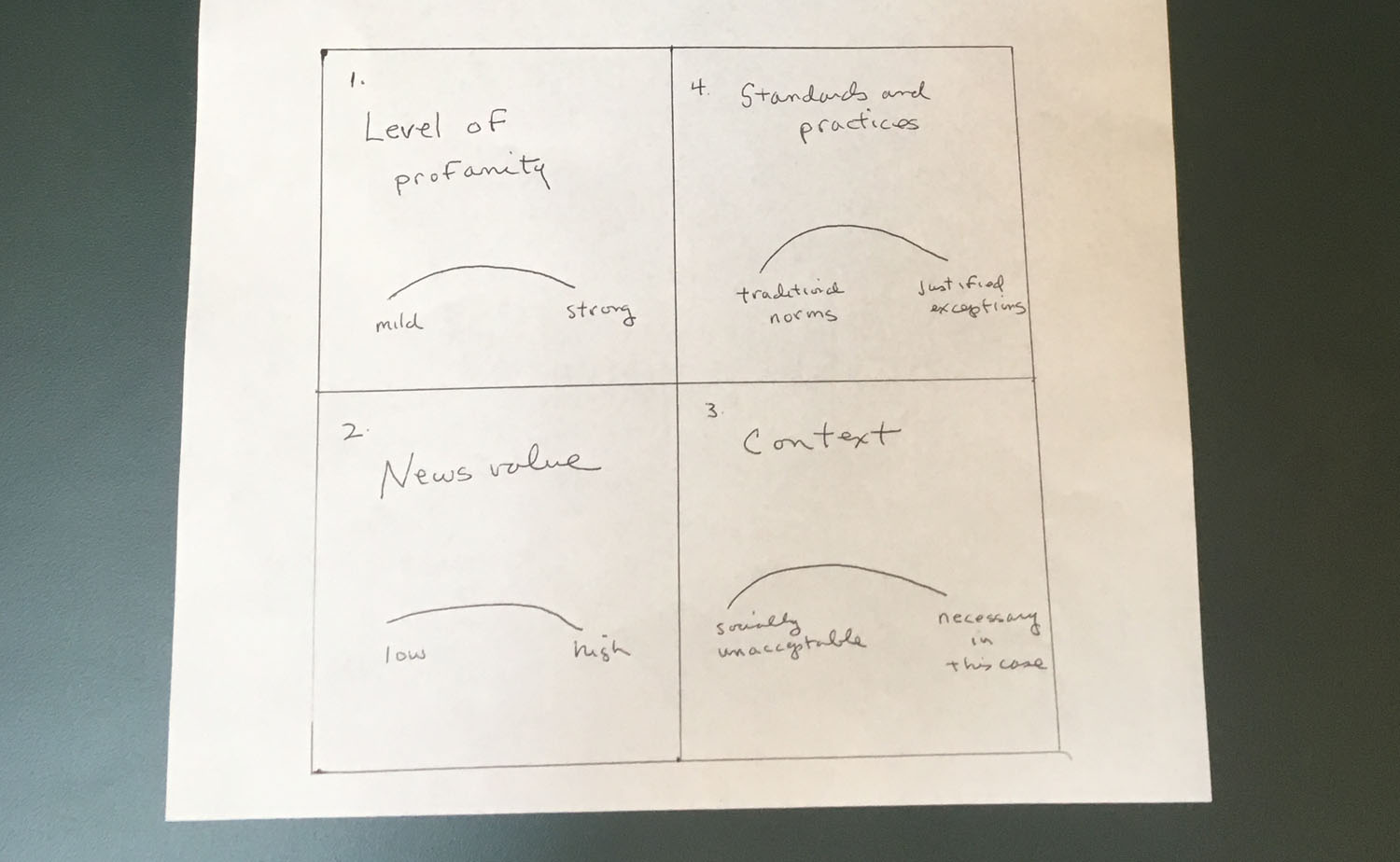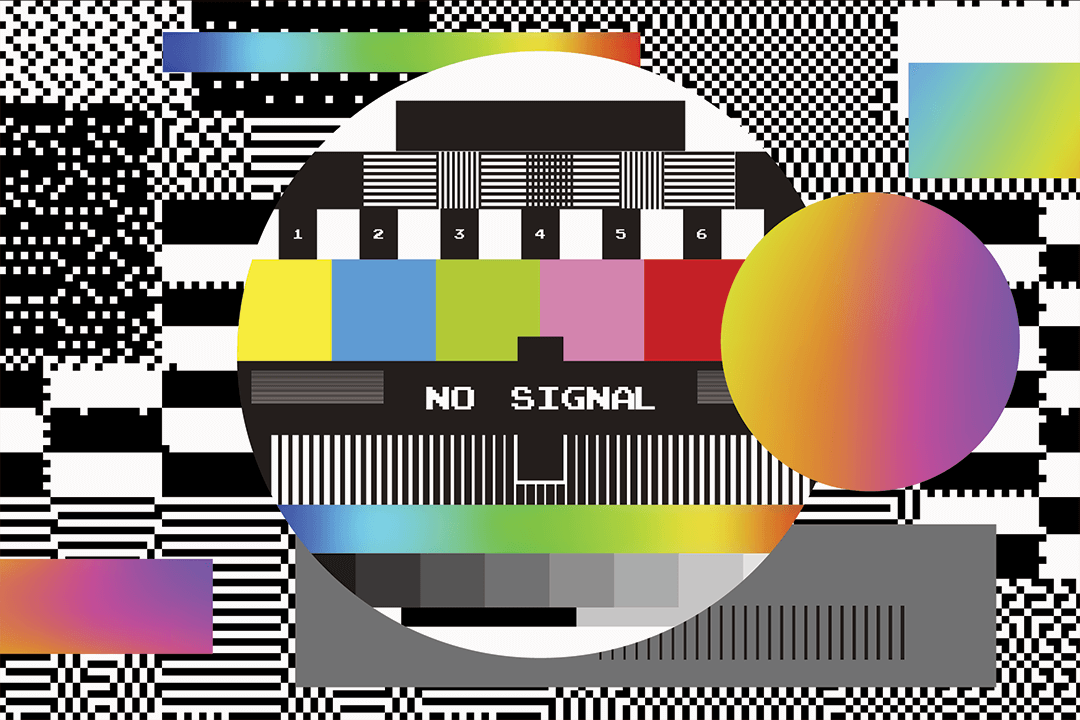When I first studied ethics in the early 1980s, I came across a model for thinking and acting — we might now call it an algorithm — called The Potter Box. Named after Ralph B. Potter of Harvard Divinity School, the box contained four quadrants.
Starting in the top left quadrant, and moving counterclockwise, The Potter Box gave us:
- Facts
- Values
- Principles
- Loyalties
The purpose of the box was to help communications professionals make ethical decisions in a systematic way. I felt challenged by the box in a good way as I moved through case studies such as a news photograph of a drowned boy, his parents grieving over his body on the shore. Should we publish it or not? If so, how and where? Should we crop out the boy’s body? Should we run it big or small, on the front page or inside?
Related Training: Ethics of Journalism
After many such cases, I came to the conclusion that The Potter Box was a little too clunky for journalists working on a competitive deadline, and perhaps a little too abstract. But inspired by Potter, we at Poynter developed a set of deadline questions that could help journalists go beyond their gut instincts:
- What is the journalistic purpose of publishing this photo?
- What good will it do?
- What are the imaginable consequences of publication?
- Is there a way to minimize harm?
- What are my alternatives?
- Whom should I consult?
And so on.
Over the last year, editors have faced several important cases in which public figures — including President Trump — have used sexual words, insults, and epithets. When The New Yorker printed an interview with Anthony Scaramucci, who served for just 10 days as director of communications out of the White House, The New York Times decided to spell out his profane insults in full. Gone was the veil of asterisks or dashes that substituted for letters in words of the four-letter Anglo-Saxon variety. (As you see, I am going to try to write this essay without using or quoting any such language. Let’s see how it goes.)
Thanks to an interview with The New York Times, I weighed in on the challenges faced by responsible editors, and, I must admit, The Potter Box came to mind. When my fingers spelled out Potty Box by mistake, I knew I was on to something.
So here is my best shot. Call it the Potty Box — or the Clark Box if you prefer (mom would be so proud) — inspired by the four quadrants of The Potter Box:
- Level of profanity
- News value
- Social context
- Standards and practices

The Poynter Box (illustration by Roy Peter Clark).
To help the user work through the box, I am proposing a scale, or spectrum, if you prefer, for each quadrant, starting with:
Quadrant #1: Level of profanity
I suggest an exercise at each news organization in which an assigned team makes a list of, say, 25 of the most objectionable words or phrases (while this exercise involves what once were called ‘dirty words,’ it could include such things as racial or ethnic slurs). The team can list words that have been used by public figures or other newsmakers and add their own, just for fun.
The team then assigns to each word a number, from 1 — 5, that is, from least to most objectionable. The results will be different for each team, but I would anticipate some recurring judgments as well. In 1980, for example, President Jimmy Carter told folks that if Ted Kennedy ran against him, he would “whip his ass.” Back then, many news organization published the remark with dashes “a – -.” Times change, and words with them. For me, “ass” scores a 1, maybe even just one-half. If you want words or phrases that might register a 5, check out any episode of “Game of Thrones” featuring a character called The Hound.
(Another exercise in this vein would be to gather the Seven Dirty Words from the famous George Carlin monologue and, with friends, rank them in order of offensiveness.)
Quadrant #2: News Value
So, someone has been quoted using a highly offensive term, a four or five on the Potty Box scale. Should you publish the language in any form? Journalists can use this quadrant to ask the standard set of questions related to newsworthiness.
Why are we publishing this? (The answer must be specific.)
Why does the public need to know the unveiled truth of what was said?
How does it relate to news values (borrowing from Melvin Mencher) such as timeliness, proximity, conflict, impact, currency, prominence and the highly unusual?
If you can answer such questions in advance of publication, you will be in a position to make your decision-making transparent and be better able to defend it in public.
The conversation can help you place the story and the language on another scale from 1 — 5, this one for news value: from low to high.
Quadrant #3: Context
You have rated the language highly offensive, but you are raising an argument for publishing it, based on news judgment. There is more work to do. You must consider the social and political contexts that will influence the reception of the message.
Race, gender, ethnicity, nationality, religion, sexual orientation and age all influence the delivery and reception of a controversial message. Photo images that appear in some newspapers in South America, for example, are often deemed too graphic for American eyes.
Such variety suggests that the team of editors is most effective when diverse. If I were trying to decide whether my paper should spell out the name of the Russian punk band “Pussy Riot” — they were arrested because of their anti-Putin demonstrations — I want women and men in the room, and maybe millennial and Baby Boomers.
The traditional phrase to describe the context of social acceptability was “good taste.” If some photo, image, or language was in “bad taste,” it meant that whatever good came from publication would be neutralized by the violation of community standards. That’s why many editors are guided by what to publish — or not publish — in the context of a “family newspaper.”
The scale for this quadrant is 1 — 5: from “socially unacceptable” to “necessary in this case.”
Quadrant #4: Standards and Practices
We already know, for example, that readers of The New York Times, The Wall Street Journal, and The New York Daily News have different expectations of what could or should appear on the page. Change feels more rapid than ever, but that does not mean that traditional standards and practices should be ignored.
It was shocking to see recent examples of sexual language in The New York Times, once honored and ridiculed as the Old Gray Lady. The paper’s slogan “All the News That’s Fit to Print” was to distinguish it a century ago from the sensationalism of the so-called yellow press.
We sometimes forget that newspaper standards and practices, while enduring, are not eternal. They were created to match market forces and to face new political, economic, social or technological problems.
Even in the news crunch of dramatic deviation from cultural, social and political norms, a news organization is wise to re-examine its traditional values, being attentive to those rare moments and cases when those values fail to serve what the public needs.
The scale in the quadrant is 1 — 5: Traditional norms to justified exceptions.







